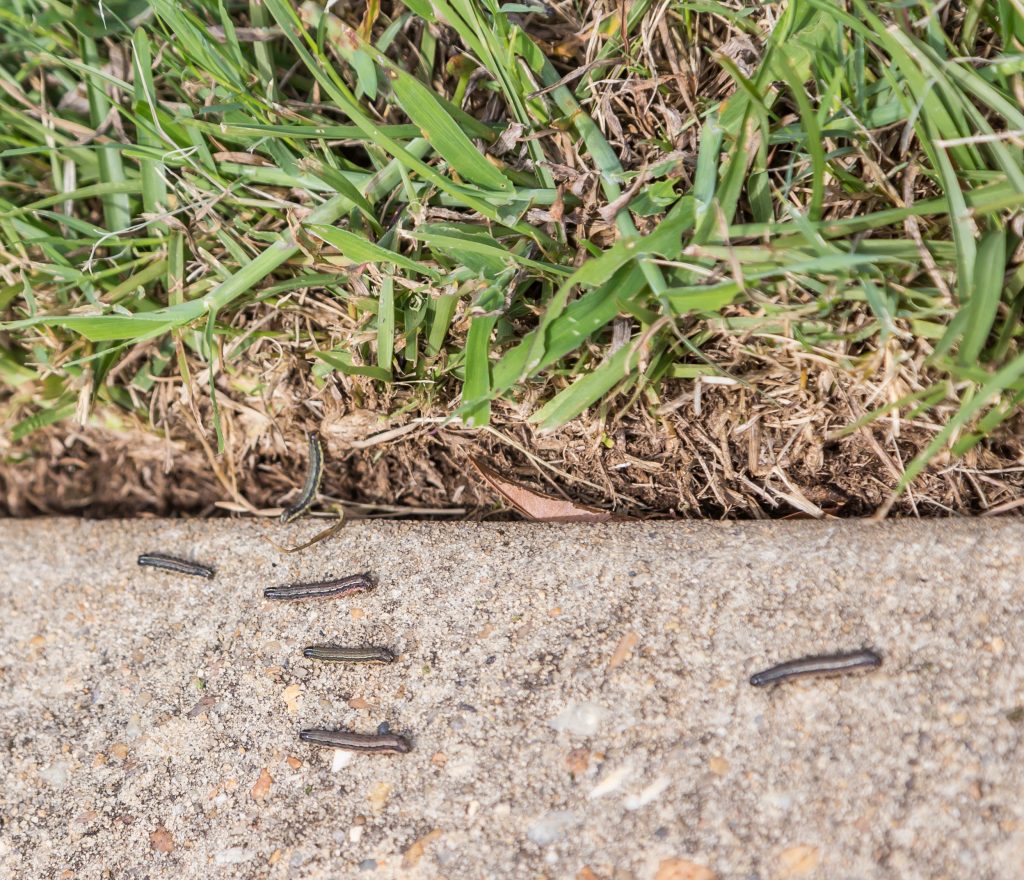
The fall armyworm is a perennial and persistent pest, consistently invading Oklahoma from the Gulf Coast states starting in early summer. In a conversation with Farm Director KC Sheperd, Kelly Seuhs, an entomologist at Oklahoma State University (OSU), confirmed that armyworms are a problem “almost a problem. I feel like every year” and advised producers to be proactively scouting, particularly in late summer and early fall, when the pests transition from unnoticed larvae into destructive, rapidly feeding pests.
Favorite Targets and Deceptive Damage
Armyworms are a nearly annual problem, with activity levels varying depending on weather patterns and jet streams. While they can infest various crops, this year Seuhs noted a significant focus on grasses.
“A lot of what I’ve been hearing personally is from the grasses pastures and even homeowner lawn situations,” he said, noting that they had been “bombarded with a lot of calls and a lot of activity with hay producers in the southern part of the state.”
The damage can appear to strike “overnight,” but the pests have been present for much longer.
“They’re kind of deceiving a little bit, because when they’re small, you don’t really see them as well,” Seuhs explained. “About 90% of the damage occurs in the last two instars [larval stages], when they get about inch and a half long… and that can occur within about maybe two to three days.”
Leading up to that point, they perform a technique known as “window painting,” or scraping the leaves, which causes minimal damage.
Scouting is Key to Prevention
Because armyworms are small and hidden in the thatch grasses during their early life stages, constant monitoring is the best defense.
“You really got to be out scouting. I mean, you just kind of got to get your hands and knees on the ground really,” Seuhs stressed.
Producers should scout during cooler times—early in the morning or late in the evening—as the timeframe from hatching to the destructive feeding stage is only about a week in warm conditions.
The peak time for heavy damage is usually late summer into early fall.
“It usually takes to the end of the summer, in the early fall, peaking around late August, early and through September, during that time frame for the populations to really build to do a lot of heavy damaging situations,” Seuhs said.
Treatment Options: Seed and Spray
When a threshold of about two to four armyworms per square foot is reached, several treatment options are available.
- Seed Treatments: Seed treatments can help protect newly planted crops like wheat and triticale. While historical products like Gaucho and Cruiser have been used, a newer product called Lumivia has been “really effective for Fall armyworm control”. This product, which contains the active ingredient chloranilil pro, is also effective against other pests, such as cutworms and grasshoppers. Seuhs suggested that for crops a producer is “really trying to protect,” seed treatments will “probably go on to pay dividends in the long run”.
- Sprays (Catching Them Small): For active infestations, the entomologist noted that the “best” control is achieved if the armyworms are caught at the half-inch or less developmental stage.
- Economical Options: Pyrethroids, such as lambda-cyhalothrin (or generics) and Mustang Max, are effective and “pretty cheap”.
- Beneficial and Friendly Options: Other options include spinosad products or products containing chloranilil pro, such as Vantacor. Seuhs cautioned that as armyworms grow larger, they become more difficult to control and may require additional applications.
When will the armyworm threat end? “Anytime we get a hard freeze,” Seuhs confirmed, adding that determining when that will happen is “the $64,000 question”.

















